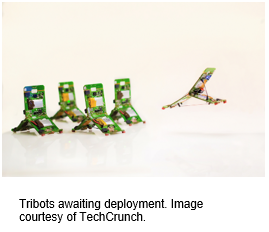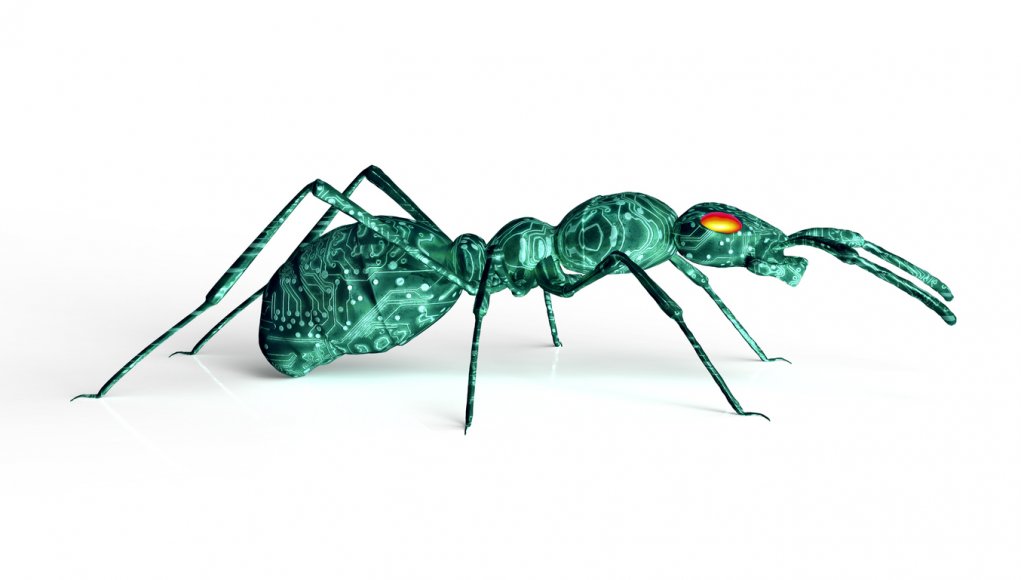EXECUTIVE SUMMARY:
At the L’Ecole Polytechnique Federale de Lausanne (EPFL), an inventive scientific team led by professor and researcher Jamie Paik, developed the concept of “Robogomis,” robots inspired by the folding techniques inherent to origami.
With a current focus on “tribots,” the group hopes to transform how we relate to certain obstacles, from the world’s biggest to the world’s smallest. More on that in a minute.
These unbelievable, buzzing “tribots” function like a cohesive army of ants, with a proclivity to working collectively, yet a capacity to operate individually.
While the form isn’t glamorous, functionally they’re q uite cutting edge. The bots can move objects together, and can relay sensory information to one another and to scientists or programmers off-site.
uite cutting edge. The bots can move objects together, and can relay sensory information to one another and to scientists or programmers off-site.
The beauty of these robots emerges from their capacity to explore complex terrains together, and to potentially rejuvenate or expedite remote search-and-rescue missions.
“With their unique collective intelligence, our tiny robots are better equipped to adapt to unknown environments. Therefore, for certain missions, they would outperform larger, more powerful robots,” says Jamie Paik, the professor and researcher spearheading the research.
On the home front, the same kind of programming logic can be used to send these collectivist workers scooting plates into place around a table, or to perform other simple, but tedious household chores.
Human operators have the ability to assign these little workers varied roles, such as that of a worker or that of a leader. As the “tribots” are deployed, the human behind the scenes can shift the tribots’ roles as needed. For example, if a leader’s chips malfunction, the leader’s role can be reassigned to a former worker.
To hear about other “robogamis”, and more mind-bending advances in haptic interfaces, watch robotician Jamie Paik’s outstanding TED talk.




